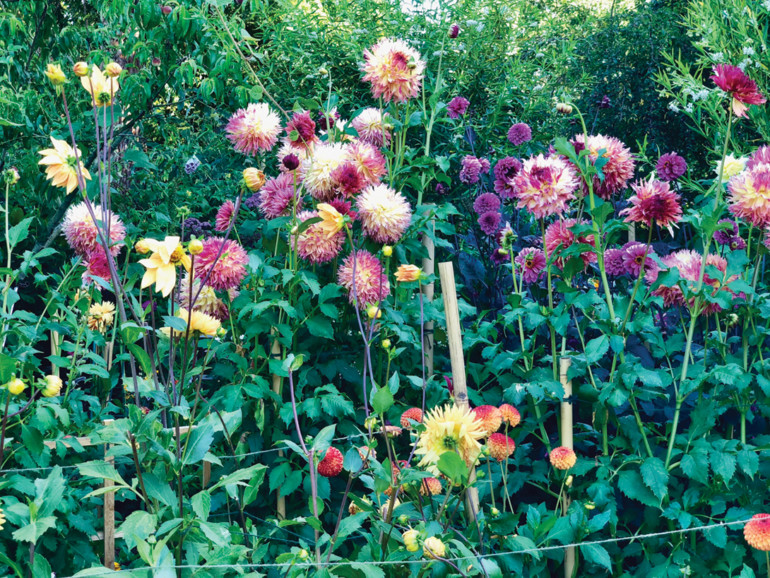Plants, like people, thrive in diverse communities. Enter the backyard food forest: a garden where mutually beneficial plant relationships are encouraged much like they would be in a real forest — and you get to put the results on your plate. And while every food forest is unique and there are no absolute best particular plant combinations, certain guidelines are helpful to ensure a productive, healthy garden. Here are some tips to create your own backyard food oasis.
LAYERS AND LAYERS
A food forest relies on the tiered effect. Start with tall foundational trees (full-size nut or fruit trees) for your plant design; then decide on the small-tree layer (semidwarf fruit trees), then the shrub layer (flowering perennials), next the herb layer (low-growing ornamental, culinary and medicinal herbs), then the ground-cover layer (nasturtiums) and the root layer (carrots and beets) and finally the vine layer (kiwi and grapes).
PURPOSE DRIVEN
Each plant has a role. Peas and beans, for example, fix the nitrogen in the soil, a process that fuels plant growth. Plants with large leaves like pumpkins and squash are not only edible but functional as an excellent living mulch that prevents soil from drying out. Deep-rooted plants like horseradish and marigolds break up the soil and seek out micronutrients that are then available to shallow-rooted plants. And pollinator-magnet flowers like echinacea and borage are essential to sustain seed and fruit crops.
METHOD TO THE MADNESS
At first glance the garden may look a little crazy, but the groupings are actually thoughtfully arranged to provide a supply of cut flowers, to encourage companion planting (different crops near each other help repel pests, attract beneficial insects and improve growth and vigor), and to take advantage of vertical and horizontal spaces.
PROS AND CONS
While the benefits — especially with companion planting — are apparent in one season, a food forest, like any forest, can take years to establish, so patience is key. But once going strong, your edible harvest increases, beneficial insects are attracted, weeds are suppressed and nutrients are returned to the soil.
HOMEWORK
Before digging in, observe the qualities and conditions of your site. What are the sun, wind and rain patterns? Ideally, plant the tallest layers to the north and progressively step down the lower layers to the south.
GETTING IN SHAPE
Design garden beds with circular, not straight, lines to maximize space, and plant frequently harvested crops closer to the edge of the bed and less frequently harvested plants toward the center.
IN THE FIELD
Allison Krivoruchko, a Marin Master Gardener, successfully grows her own backyard food forest in Mill Valley to “utilize our small space and plant more layers of vegetables and fruit trees under our tall palm and apricot tree.” Her top companion-pairing plant choices: large African marigolds and nasturtiums with tomatoes, cucumbers and squash. Also, sunflowers, dill and fennel to control aphids and leaf miners.



